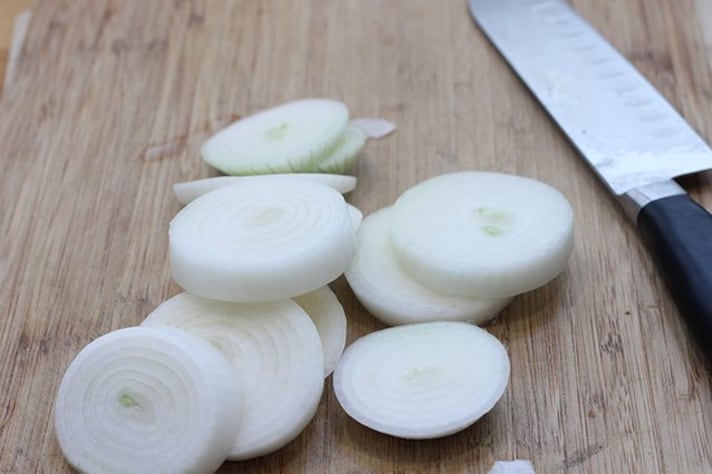
If there’s one food that walks the line between glorious crunch and soggy despair, it’s the onion ring. Done right, they’re golden halos of fried perfection. Done wrong? You’ve got limp, greasy loops that taste more like regret than reward. As someone who's battered and fried through more recipes than I'd care to admit, allow me to walk you through the sins—big and small—that stand between you and onion ring greatness.
1. The Wrong Ring Thing

Not all onions are created equal, and this is where the trouble usually starts. Sweet onions like Vidalia or Walla Walla are your best bet. Their natural sugars caramelize slightly during frying, lending that subtle sweetness we all crave. Yellow onions can work in a pinch, but red or white? Save those for your salads. Using the wrong type means risking bitterness or overpowering sharpness—and trust me, no one wants an onion ring that bites back.
2. Thick-Cut Disasters

Some folks slice their onion rings thick, thinking they’ll yield a heartier bite. But what you end up with is either an undercooked, slimy center or an overcooked crust trying to compensate. The ideal slice? About a quarter-inch thick. Thick enough to maintain structure, thin enough to cook evenly. Anything more, and you’re basically eating battered onion soup.
3. Cry Me a Batter

A lot of home cooks trip over the batter—either making it too runny or too doughy. Flour, cornstarch, baking powder, and beer or club soda usually make the dream team. The trick? Cold ingredients. Cold batter hitting hot oil creates a shock that leads to crispiness. Room temp batter just soaks into the onion like a bad decision. Bonus tip: let your batter rest for 10 minutes before dipping. That’s when the magic happens.
4. Dredge, Don't Drown

Here’s where the mess begins. Many assume dunking rings straight into batter is enough. Nope. For a clinging, crispy crust, you need a dry coat first. Dusting the onions in flour before dipping helps the batter stick like gossip in a small town. Skip this step and you’ll watch your coating slide off like a cheap toupee.
5. The Oil Isn’t Alright

Temperature matters—a lot. Frying below 350°F invites oil into every crevice, leaving you with soggy sadness. Go hotter than 375°F, and you’ll get scorched batter with a raw interior. A good-quality, high smoke-point oil like peanut or canola is your best frying friend. And whatever you do, don’t crowd the pot. Overcrowding drops the oil temp and guarantees greasy rings. Think of it as a party: less crowding, more fun.
6. Skipping the Drain Game

Fresh out of the oil, your onion rings need a place to land—and no, it’s not a paper towel. Paper towels trap steam underneath, softening your once-crisp treasures. Instead, place them on a wire rack set over a baking sheet. Air circulation is the unsung hero of crunch retention.
7. Underseasoned is Unforgivable

Here’s a truth bomb: bland onion rings are just fried sadness. Season your batter, season your dredge, and for heaven’s sake, sprinkle salt the moment they come out of the oil. That’s when their crispy little pores are most open to flavor. Skimp here, and you’ll be dipping in ranch just to feel something.
8. The Too-Soon Crunch

Patience, my hungry friend. Onion rings fresh from the fryer need a minute—literally—to set. Bite into one too soon, and you risk molten onion lava or dislodging the entire ring in one messy pull. Give it 60 seconds. Use that time to plate, pose, or pour yourself something cold.
9. Overreaching with Extras

Tempting as it may be to jazz up your batter with garlic powder, cayenne, or parmesan, restraint is key. A well-made onion ring is a minimalist pleasure. You can always bring the spice later—in the dipping sauce, in a sprinkle on top—but don’t overwhelm the batter. Subtlety is the secret to versatility.
;Resize,width=767;)
